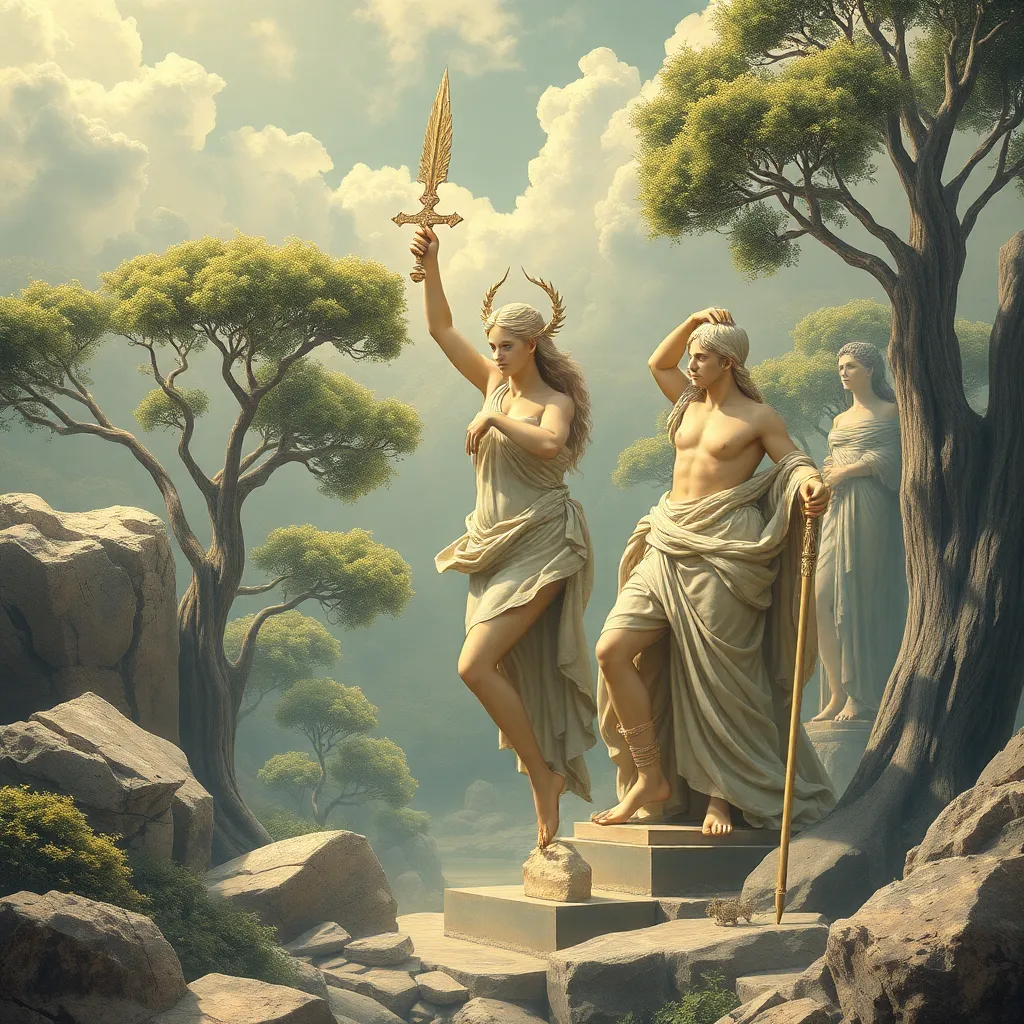The Myths of Artemis: A Study of Her Most Famous Legends
I. Introduction
Artemis, one of the most revered deities in Greek mythology, embodies the spirit of the hunt, the wilderness, and the moon. As the daughter of Zeus and Leto, and the twin sister of Apollo, she occupies a prominent place in ancient narratives. Her myths not only highlight her unique attributes but also reveal the values and beliefs of ancient Greek culture.
The significance of Artemis’s myths lies in their multifaceted nature; they touch upon themes of femininity, independence, and the relationship between humanity and nature. This study aims to explore these themes through a selection of her most famous legends, shedding light on her role in both ancient and modern contexts.
II. The Birth of Artemis: A Tale of Duality
The birth of Artemis is surrounded by a rich tapestry of circumstances that highlight her duality. According to myth, Leto, pregnant with Artemis and Apollo, was pursued by Hera’s wrath, forcing her to wander in search of a safe place to give birth. Eventually, she found refuge on the island of Delos, where she gave birth to Artemis first, who would later assist in the delivery of her twin brother, Apollo.
This narrative illustrates the deep bond between the twins, symbolizing not only their connection but also the concept of duality in their identities. Artemis is often seen as a representation of the wild and untamed, while Apollo embodies order and civilization. Together, they represent the balance between these opposing forces.
III. Artemis as the Goddess of the Hunt
Artemis is most famously known as the goddess of the hunt, a role that encapsulates her independence and strength. She is often depicted with a bow and arrows, accompanied by a pack of hunting dogs. Her attributes reflect not only her prowess as a hunter but also her connection to nature.
- Attributes: Artemis is associated with wild animals, forests, and the moon, symbolizing purity and untamed beauty.
- Significance of Hunting: In ancient Greek society, hunting was a crucial aspect of survival and a rite of passage for young men. Artemis’s role emphasized the importance of nature and the skills required to navigate it.
Numerous myths illustrate her capabilities, such as the tale of Actaeon, a hunter who accidentally stumbled upon Artemis while she was bathing. Enraged by his intrusion, she transformed him into a stag, leading to his demise at the hands of his own hunting dogs. This story reinforces her fierce independence and her demand for respect.
IV. The Virgin Goddess: Myths of Chastity and Independence
Artemis’s virginity is a defining characteristic of her mythology, setting her apart from many other female deities. Her commitment to chastity symbolizes her autonomy and rejection of traditional female roles associated with marriage and motherhood.
- Importance of Virginity: In a society that often placed women in subservient roles, Artemis’s choice to remain a virgin highlights her power and independence.
- Key Legends: Myths such as her rejection of the advances of various suitors, including the mortal Orion, emphasize her dedication to her own path.
This aspect of her character contrasts sharply with other goddesses, such as Hera and Aphrodite, who embody different facets of femininity and marital relationships. Artemis stands as a symbol of strength and self-determination.
V. The Protector of Women and Children
Beyond her role as a huntress, Artemis is also revered as a protector of women and children. This nurturing aspect of her character is evident in various myths, where she comes to the aid of those in need.
- Guardian Figure: Artemis is often invoked during childbirth and is seen as a guardian of young women, guiding them through the trials of life.
- Notable Myths: In one tale, she protects the pregnant woman Callisto from the wrath of Hera, ensuring her safety and that of her child.
This protective instinct not only affects how femininity and motherhood were viewed in ancient times but also illustrates Artemis’s multifaceted nature as both a fierce warrior and a nurturing figure.
VI. The Wrath of Artemis: Tales of Revenge
<pWhile Artemis is often celebrated for her protective qualities, she is also known for her vengeful side. Myths that depict her wrath serve as cautionary tales about the consequences of disrespecting her or violating her sacred spaces.
- Vengeful Myths: The story of Niobe is a prime example; Niobe, boasting about her children, insulted Leto, leading Artemis and Apollo to slay her children as retribution.
- Motivations: Artemis’s actions often stem from a desire to uphold her values and protect her sanctity, showcasing her as a deity who demands respect.
The consequences of crossing Artemis can be dire, reflecting the importance of reverence for the divine in ancient Greek society.
VII. Artemis in the Modern Context
Artemis’s influence extends beyond ancient mythology into contemporary culture. Her stories have inspired countless works of literature, art, and modern interpretations.
- Contemporary Influence: Artemis is often depicted in modern literature as a strong female character, embodying themes of independence and empowerment.
- Representation in Art: Artists throughout history have captured her essence, showcasing her as a symbol of nature and freedom.
- Reinterpretations: Modern narratives frequently explore her character in new ways, often highlighting her struggles against patriarchal structures.
VIII. Conclusion
In summary, the myths of Artemis reveal a complex character that embodies themes of duality, independence, and protection. Her stories reflect the values of ancient Greek culture while also resonating with modern audiences. The enduring legacy of Artemis serves as a reminder of the strength and complexities of femininity, making her an essential figure in both mythological studies and contemporary discussions on gender and empowerment.
As we reflect on the tales of Artemis, we can appreciate their relevance in today’s society, where her stories continue to inspire and challenge our understanding of womanhood and independence.




